Customers enter the restaurant throughout the day, and must be served in a timely manner to avoid losing the run. Establishing a strong setup in the Preparation Phase, then managing customers efficiently during the Customer Phase, are both key to a successful restaurant.
During the Preparation Phase, two values in the top-right corner of the screen forecast the amount of customers for the coming day.
 Expected Groups indicates the number of customer groups passing through the restaurant. This value will passively increase over the course of a run, but can also be modified by picking certain Cards. Restaurants offering a small menu of quick and simple Recipes generally serve far more customers in a day than those with Cards for several, more laborious dishes.
Expected Groups indicates the number of customer groups passing through the restaurant. This value will passively increase over the course of a run, but can also be modified by picking certain Cards. Restaurants offering a small menu of quick and simple Recipes generally serve far more customers in a day than those with Cards for several, more laborious dishes.- Group Sizes indicates the minimum and maximum groups in which customers could appear. The default range is 1–2, which can only be modified by certain Cards. Players cannot leave the Preparation Phase until at least one table is provided to accommodate the largest possible group size.
¶ Preparation Phase
In the Preparation Phase, players can rearrange tables and chairs. Whenever a Dining Table or Coffee Table is placed, chairs will appear around it in all available spaces.
- Green chairs are active, and can seat customers. The number of green chairs around a table determines its capacity, shown as a number above the table. At least one Dining Table must be able to seat the largest possible Group Size.
- Maroon chairs are inactive, and will not be used by customers.
- Light brown chairs are active, but inaccessible. They cannot seat customers until players clear any obstructing items between the chair and the front door (see section on Pathing).
Chairs can be toggled by holding Interact, and rotated by pressing Grab if adjacent to multiple tables.
Tables of the same type placed next to each other will combine to seat more customers (this includes the Coffee Table, but excludes the Bar Table and Table - Simple Cloth). In these instances, the table which was placed last is the head table and determines where dirty plates (or similar items) will spawn once customers finish a meal. This head table can also be identified by the hovering number indicating its capacity.
The table's orientation will determine the order in which customers will fill its available seats.
- In its default orientation, chairs are filled in the order:
Right,Down,Left,Up.- A table placed against walls may start with a different orientation, where
Upis facing the wall.
- A table placed against walls may start with a different orientation, where
- When adding a table to an existing table set, customers fill the new head table first before following the order in the previous table set.
- When joining multiple sets together, table sets are added to the new head table in the order
Up,Down,Left,Right(in global orientation, not the table's orientation).
In Practice Mode, cats will enter the restaurant and simulate customer behavior for the coming day. They will spawn in the same Group Sizes, use tables and chairs, and order food as normal customers would. However, only one group of cats can be present at a time, providing no accurate indication of the number or frequency of Expected Groups.
¶ Customer Phase
Over the course of the Customer Phase, the exact number of Expected Groups for the day will pass through the restaurant in the range of Group Sizes shown during the Preparation Phase. When a group of customers spawns outside the restaurant, they will do one of the following things, in descending priority.
- Customers will initially seek a Dining Table (or any upgraded Table) with sufficient seats and clear of items. The
 Thinking phase begins once the whole group is seated.
Thinking phase begins once the whole group is seated. - If no suitable Dining Table is available, they will seek an unoccupied Hosting Stand. The
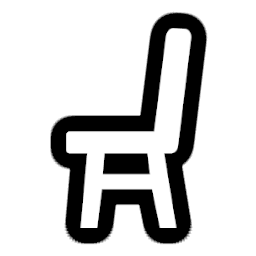 Waiting for Table phase begins as soon as the group begins pathing to the stand, and acts as an optional buffer between dining and queuing.
Waiting for Table phase begins as soon as the group begins pathing to the stand, and acts as an optional buffer between dining and queuing. - If no Hosting Stand is available, they will seek a Coffee Table with sufficient seats. The
 Waiting for Table phase begins once the whole group is seated. When moving from a Coffee Table to a Hosting Stand,
Waiting for Table phase begins once the whole group is seated. When moving from a Coffee Table to a Hosting Stand,  patience is reset.
patience is reset. - If none of the above is available, they must
 Queue outside. This phase begins once the first member of the group reaches the front door, unless joining a preexisting queue (see section on Queuing Patience). Customers in smaller groups may skip ahead in the queue if a table becomes available which cannot seat the larger groups in front of them.
Queue outside. This phase begins once the first member of the group reaches the front door, unless joining a preexisting queue (see section on Queuing Patience). Customers in smaller groups may skip ahead in the queue if a table becomes available which cannot seat the larger groups in front of them.
¶ Pathing
Customers will take the most direct route possible to their destination, and their original route may be interrupted at any time if a suitable Coffee Table, Hosting Stand, or Dining Table becomes available. They will collide with players, but phase through other customers. They will also collide with doors, meaning that customers pushing in opposite directions may briefly obstruct each other.
Customers will start walking towards a Dining Table if it is clear of items at any moment after they spawn (![]() Charming Level 3 ignores this requirement). Once they begin pathing to a Dining Table, they will take seats there even if items are placed on it before they arrive. This allows players under time pressure to Grab and, if necessary, immediately replace a single dirty plate in order to force customers to take their seats and replenish their patience.
Charming Level 3 ignores this requirement). Once they begin pathing to a Dining Table, they will take seats there even if items are placed on it before they arrive. This allows players under time pressure to Grab and, if necessary, immediately replace a single dirty plate in order to force customers to take their seats and replenish their patience.
In order for a table to seat customers, there must be at least one path of open tiles from the front door to each active chair. Doors, other chairs, and non-collidable items such as Robot Buffers will not obstruct this path, but walls and solid items will. Customers cannot, as players can, fit through gaps left by hitboxes which do not occupy a full tile.
¶ Patience
The Patience Bar measures how long a group of customers will wait in any one phase before leaving the restaurant. Each group displays an icon indicating their current status, and a patience bar which slowly depletes until they are moved on to the next phase. Some patience bar can recover some time though certain actions, but the total time remaining after recovery will cap at its initial value. If any group's patience bar drains entirely, the run is immediately lost (unless an Extra Life is active).
For restaurants serving more than 1 course (Starters, Mains, or Desserts), customers will repeat all Dining Phases for each course.
Note: Durations listed below are the base values before any modifiers from Appliances, Decorations, and/or Cards (see section on Patience Modifiers).
| Phase | Description | Exit Trigger | Typical Duration by Player Count | |||
|---|---|---|---|---|---|---|
| Customers are waiting outside to be seated in the restaurant | Clear Dining Table or Coffee Table with sufficient seats | 120s (day) 60s (night) * |
90s (day) 45s (night) * |
82s (day) 41s (night) * |
78s (day) 39s (night) * |
|
| Customers are waiting inside to be seated at a table (only with Hosting Stand or Coffee Table) |
Clear Dining Table with sufficient seats | 200s | 150s | 136s | 130s | |
| Dining Phases | ||||||
| Customers are deciding what to order | Automatic once time has elapsed | 2.5s † (unaffected by patience modifiers) |
||||
| Customers are waiting for their order to be taken | Interact with Dining Table or Ordering Terminal | 200s | 150s | 136s | 130s | |
| Customers are waiting for their first food to be delivered | Deliver a food to first customer | 120s | 90s | 82s | 78s | |
| Customers are waiting for the rest of their food to be delivered |
Deliver all remaining food to the entire customer group | 20s ‡ (+2.7s/delivery) |
15s ‡ (+2s/delivery) |
13.6s ‡ (+1.8s/delivery) |
13s ‡ (+1.7s/delivery) |
|
| Eating | Customers are eating | Automatic once time has elapsed | 3s † (unaffected by patience modifiers) |
|||
* ![]() Queuing patience is based here on a single queuing group throughout the duration. In practice, patience constantly fluctuates as customers join and leave the queue, and depends upon the time and weather (see section below for more).
Queuing patience is based here on a single queuing group throughout the duration. In practice, patience constantly fluctuates as customers join and leave the queue, and depends upon the time and weather (see section below for more).
† ![]() Thinking and Eating durations are unaffected by player count. They are excluded from effects which refer to 'all patience', or do not specify a phase.
Thinking and Eating durations are unaffected by player count. They are excluded from effects which refer to 'all patience', or do not specify a phase.
‡ ![]() Delivery patience is boosted slightly each time a Main, Side, Starter, or Dessert is served to a group, up until the final item.
Delivery patience is boosted slightly each time a Main, Side, Starter, or Dessert is served to a group, up until the final item. ![]() Formal Level 2 provides +500% to these increments.
Formal Level 2 provides +500% to these increments.
¶  Queuing Patience
Queuing Patience
All queuing customer groups share a single patience bar. Following the first group, each subsequent group to join the queue causes ![]() Queuing patience to decrease 10% faster (stacks multiplicativly). Moving a queuing group on to the
Queuing patience to decrease 10% faster (stacks multiplicativly). Moving a queuing group on to the ![]() Waiting for Table or Dining phases by clearing a suitable table provides a slight boost to
Waiting for Table or Dining phases by clearing a suitable table provides a slight boost to ![]() Queuing patience, while clearing the whole queue fully restores patience until the next queuing group arrives.
Queuing patience, while clearing the whole queue fully restores patience until the next queuing group arrives.
![]() Queuing patience is also affected by both time and weather. The icon on the patience bar will change to indicate any negative modifiers currently active.
Queuing patience is also affected by both time and weather. The icon on the patience bar will change to indicate any negative modifiers currently active.
 Night covers the final third of the day until closing time, continuing until all customers have been cleared and the Customer Phase ends. It causes
Night covers the final third of the day until closing time, continuing until all customers have been cleared and the Customer Phase ends. It causes  Queuing patience to decrease 100% faster.
Queuing patience to decrease 100% faster. Rain occurs randomly upon starting a new day, and lasts throughout the day. It causes
Rain occurs randomly upon starting a new day, and lasts throughout the day. It causes  Queuing patience to decrease 50% faster.
Queuing patience to decrease 50% faster. Snow (Alpine layouts) occurs randomly upon starting a new day, and lasts throughout the day. It causes
Snow (Alpine layouts) occurs randomly upon starting a new day, and lasts throughout the day. It causes  Queuing patience to decrease 100% faster.
Queuing patience to decrease 100% faster.
The time and weather modifiers stack multiplicatively, meaning that customers have only 25% of their usual patience in ![]() Snow at
Snow at ![]() Night. However, only one icon is shown on the patience bar, and
Night. However, only one icon is shown on the patience bar, and ![]() Night takes priority.
Night takes priority.
 Queuing Patience Formula
Queuing Patience Formula
Queue patience starts at a value of 100, and decreases over time. Queued customers run out of patience if the queue patience reaches 0.
When customers are in the queue, queue patience decreases at a steady rate of Queue Patience Decay Rate = (Time of Day Factor) * (Weather Factor) * (Number of Players Factor) * (Queuers Factor) * (Exclusive Tier 1 Factor) per second.
Whenever a customer group is able to enter the restaurant, queue patience receives a one-time increase of (Queue Patience Decay Rate) * (10 seconds). Patience is capped at the maximum of 100.
Whenever the queue becomes empty, queue patience is reset to 100.
Factors:
- Time of Day Factor:
- Daytime = 1
- Nighttime = 2
- Weather Factor:
- Clear = 1
- Rain = 1.5
- Snow = 2
- Number of Players Factor:
- One player = 0.75
- Two players = 1
- Three players = 1.1
- Four players = 1.15
- Queuers Factor = 1.1 ^ (number of groups in queue), capped at 5. The cap is reached when there are at least 17 groups in the queue.
- Exclusive Tier 1 factor = 0.75 if the restaurant has this boost, 1 otherwise
¶ Extra Item  Delivery Phase
Delivery Phase
Some foods, like Hot Dogs, Stir Fry, or Coffee, have Extra Items that customers may request while eating their respective food. For every second during the Eating Phase, there is roughly a 10%~20% chance an individual customer may order an extra item, increasing the more extra items the player has unlocked.
When a customer orders an extra item, this stops the Eating Phase and initiates another ![]() Delivery phase. Once the requested item has been delivered, by placing it on their table or on an adjacent Conveyor, Grabber, or Teleporter, the
Delivery phase. Once the requested item has been delivered, by placing it on their table or on an adjacent Conveyor, Grabber, or Teleporter, the ![]() Delivery phase will end and restart the Eating Phase at the beginning again (the eating duration is set back to its full duration regardless of how long the customer was eating before requesting their extra item).
Delivery phase will end and restart the Eating Phase at the beginning again (the eating duration is set back to its full duration regardless of how long the customer was eating before requesting their extra item).
An individual customer can only order at most 1 Extra Item in total, but each individual customer within a group can order an extra item. Only 1 customer within the group will order an extra item at a time. This means, if the customer group size is more than 1, the process of requesting an extra item, serving the extra item, and then restarting the Eating phase at the beginning again may repeat multiple times.
¶ Patience Modifiers
Customer patience during each phase may be modified by certain Appliances, Decorations, and Cards. The following effects can stack with each other, and apply to the whole restaurant throughout the day unless otherwise specified.
Note: Increased patience (duration) is generally a positive effect, except in the case of ![]() Thinking and Eating. Though these two phases cannot directly cause a player to lose a run, they do slow down the customer turnover rate, so increasing their duration is generally a negative. Values are color-coded accordingly.
Thinking and Eating. Though these two phases cannot directly cause a player to lose a run, they do slow down the customer turnover rate, so increasing their duration is generally a negative. Values are color-coded accordingly.
¶  Queuing
Queuing
 Exclusive Level 1 +33% patience
Exclusive Level 1 +33% patience
¶  Thinking
Thinking
- Breadsticks +100% duration (must be placed on table)
- Table - Simple Cloth +200% duration
- Calm Painting +100% duration (tables within room)
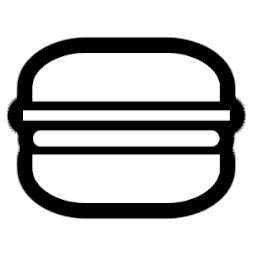 Affordable Level 1 -50% duration
Affordable Level 1 -50% duration- Bar Table removes
 phase
phase
¶  Service
Service
- Ordering Terminal -30% patience
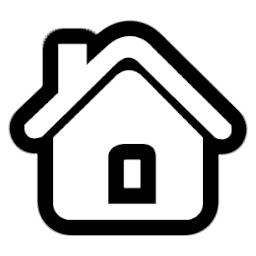 Charming Level 1 +50% patience
Charming Level 1 +50% patience Instant Service Card removes
Instant Service Card removes  phase
phase
¶ 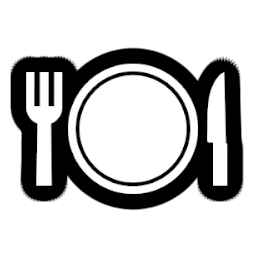 Waiting for Food
Waiting for Food
- Metal Table -50% patience
 Affordable Level 3 -50% patience
Affordable Level 3 -50% patience Fire Debuff -20% patience (tables within 2 tiles of cooking appliance)
Fire Debuff -20% patience (tables within 2 tiles of cooking appliance)- Specials Terminal resets patience (interact to reset a customers' orders)
- Specials Menu resets patience (must be placed on table, resets customers' orders)
- Flower Pot (blue) resets patience (must be given to table, resets customers' orders)
¶  Delivery
Delivery
- Metal Table -50% patience
- Calm Painting +100% patience (tables within room)
- Breadsticks +100% patience (must be placed on table)
 Formal Level 2 increases recovery patience *
Formal Level 2 increases recovery patience * Affordable Level 3 removes
Affordable Level 3 removes  phase, merged into
phase, merged into  phase
phase Individual Dining Card effectively removes
Individual Dining Card effectively removes  phase (sets all Group Sizes to 1)
phase (sets all Group Sizes to 1)
* Does not modify ![]() phase directly, but increases the patience boost per delivery +500% (for example, +2.7s for solo players becomes +16s). Without Sides, this will only affect Group Sizes > 2, since the boost requires intermediate deliveries between the first and last dish.
phase directly, but increases the patience boost per delivery +500% (for example, +2.7s for solo players becomes +16s). Without Sides, this will only affect Group Sizes > 2, since the boost requires intermediate deliveries between the first and last dish.
¶ Eating
 Leisurely Eating Card +300% duration
Leisurely Eating Card +300% duration- Sharp Cutlery -50% duration (must be placed on table)
 Affordable Level 1 -50% duration
Affordable Level 1 -50% duration- Foods like Coffee or Cakes increases the duration. Does not stack with itself.
¶ Table Patience
The following modifiers apply to ![]() Service,
Service, ![]() Waiting for Food, and
Waiting for Food, and ![]() Delivery patience. They also apply to
Delivery patience. They also apply to ![]() Waiting for Table patience at the Coffee Table, but not the Hosting Stand.
Waiting for Table patience at the Coffee Table, but not the Hosting Stand.
- Plant +10% patience (tables within 2 tiles)
 Charming Level 2 +100% patience when players are nearby
Charming Level 2 +100% patience when players are nearby- Flower Pot (yellow) resets patience for current phase (must be given to table)
 Exclusive Level 3
Exclusive Level 3  Queues stop patience decreasing
Queues stop patience decreasing- Table or its chairs are on fire Approximately -99% patience; can stack when multiple tiles are on fire simultaneously
¶ Other Patience
The following modifiers apply to multiple different phases which fall outside of Table Patience.
 High Expectations Card -20% patience
High Expectations Card -20% patience 
 †
†

 Victorian Standards Card -75% patience when customers are looking at players
Victorian Standards Card -75% patience when customers are looking at players 


- Candle Box +20% patience


 (must be placed on table, only at
(must be placed on table, only at  Night)
Night)  Empathy Card hides patience, but no effect on duration
Empathy Card hides patience, but no effect on duration 



† Only applies to ![]() Waiting for Table patience at the Coffee Table, but not the Hosting Stand.
Waiting for Table patience at the Coffee Table, but not the Hosting Stand.
¶ Expected Groups
The number of ![]() Expected Groups passively increases over the course of a run, but can also be modified by a given percentage upon picking certain Cards.
Expected Groups passively increases over the course of a run, but can also be modified by a given percentage upon picking certain Cards.
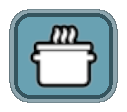 Base Recipe, chosen to start a run (+30% for Burgers and Coffee, +15% for Salad, Tacos, and Hot Dogs, +0% for Steak, Pizza, Cakes, and Breakfast, -15% for Turkey, Pies, Fish, Spaghetti, and Stir Fry, -30% for Dumplings)
Base Recipe, chosen to start a run (+30% for Burgers and Coffee, +15% for Salad, Tacos, and Hot Dogs, +0% for Steak, Pizza, Cakes, and Breakfast, -15% for Turkey, Pies, Fish, Spaghetti, and Stir Fry, -30% for Dumplings)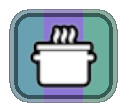 Food Cards, chosen every
Food Cards, chosen every  third day (-15% for most, -30% for Apple Salad and Potato Salad. Customers are reduced by an additional -20% if the restaurant serves two courses, and -33.3% if it serves three)
third day (-15% for most, -30% for Apple Salad and Potato Salad. Customers are reduced by an additional -20% if the restaurant serves two courses, and -33.3% if it serves three) Customer Cards, chosen every
Customer Cards, chosen every  third day (+25% for Advertising, -15% for Double Helpings and Leisurely Eating, -30% for All You Can Eat)
third day (+25% for Advertising, -15% for Double Helpings and Leisurely Eating, -30% for All You Can Eat) Franchise Cards, chosen upon completing
Franchise Cards, chosen upon completing  Day 15 (+30% for most)
Day 15 (+30% for most)
Morning Rush, Lunch Rush, and Dinner Rush introduce influxes of customers, indicated by a '+x' after the Expected Groups number. Closing Time? may also bring additional customers not considered in this calculation.
¶ Multiplayer Modifier
 1 player 80% of usual customers
1 player 80% of usual customers 2 players 100% of usual customers
2 players 100% of usual customers 3 players 125% of usual customers
3 players 125% of usual customers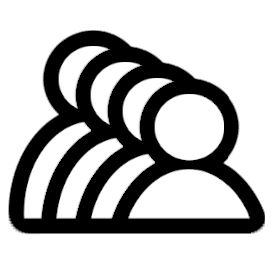 4 players 150% of usual customers
4 players 150% of usual customers
¶ Expected Groups Calculation
The following table estimates ![]() Expected Groups by player count over time in the default settings. It only accounts for passive scaling, and ignores modifiers introduced by Cards (including the
Expected Groups by player count over time in the default settings. It only accounts for passive scaling, and ignores modifiers introduced by Cards (including the ![]() Base Recipe chosen to start the run).
Base Recipe chosen to start the run).
| Day | |||||||||||||||
|---|---|---|---|---|---|---|---|---|---|---|---|---|---|---|---|
| 1 | 2 | 3 | 4 | 5 | 6 | 7 | 8 | 9 | 10 | 11 | 12 | 13 | 14 | 15 | |
| 3 | 3 | 4 | 5 | 5 | 7 | 7 | 8 | 9 | 10 | 11 | 13 | 13 | 14 | 16 | |
| 3 | 4 | 5 | 6 | 6 | 8 | 9 | 9 | 12 | 12 | 13 | 16 | 16 | 17 | 20 | |
| 4 | 5 | 7 | 7 | 8 | 10 | 11 | 12 | 14 | 15 | 16 | 19 | 20 | 21 | 25 | |
| 4 | 5 | 8 | 9 | 9 | 12 | 13 | 14 | 17 | 18 | 19 | 23 | 24 | 26 | 30 | |
For a more detailed calculation of the ![]() Expected Groups count, expand the tab below.
Expected Groups count, expand the tab below.
Expected Groups Formula
Expected Group = [ Customer Count ] / [ Average Group Size ]Average Group Size = (Min Group Size + Max Group Size) / 2
Customer Count = (Day Length) / 25 * (Customer Modifier Rate) * (Day Modifier) * (Multiplayer Modifier) * (Course Amount) * (Card Multiplier)
- Day Length = 100 (+25 after every 3 days completed)
- Customer Modifier Rate = 0.85 ^ x (x starts at 0)
- Add 1 to x for each -15% customer reduction
- Add 2 to x for each -30% customer reduction
- Subtract 1 from x for each +15% customer increase
- Subtract 2 from x for each +30% customer increase
- Day Modifier
- If day 1, 2, or 3 = 1, 1.25, or 1.5
- For day 4 to day 15 = 1.5 + (0.15 * [day - 3])
- Beyond day 15 (overtime) = 1.5 + 0.15 * ([day - 3] + [day - 15]^1.5)
- Multiplayer Modifier = 80% / 100% / 125% / 150%
- Course Amount
- One course (Starter, Main or Dessert) = 1
- Two courses = 0.8
- All three courses = 0.6667
- Customer Card Multiplier = 1 (base value)
- Advertising = +0.25
- Does not include rush cards or Closing Time.
After the expected group count is determined, each group is randomizes to be any of the sizes between the min and max group size, but can be predetermined by the seed if on the "Seed Affects Everything" setting. Additionally, this means that the actual number of customers can differ from the Customer Count variable used to determined the Expected Group count.
The Rush Cards, like Morning Rush or Lunch Rush, spawn +15% of Expected Group Count (as of v1.3.0; prior to this version, it was based on Customer Count, meaning larger group sizes than the standard would see huge influxes of customers per Rush) as the number of groups per rush. They stack additively with each other.
Closing Time spawns groups based off of 20% of the Customer Count after the 'end of the day' is reached.
¶ Group Sizes
The range of possible Group Sizes for customers default to 1-2 until modified by picking certain Cards.
| Name | Prerequisite | Effect | Group Sizes |
|---|---|---|---|
| -1 maximum group size | 1–1 | ||
| +2 maximum group size +1 minimum group size |
2–4 | ||
| +1 maximum group size -1 minimum group size |
1–5 (3-7 with Large Groups) |
||
| +2 group size | 4–6 (3–7 with Flexible Dining) |
||
(Autumn Setting) |
Group size increases by 1 every 3 days (or every 10 days in Overtime) | Max +1 Min +1 |
|
(Romantic Setting) |
Couples can now come in groups of 4 Increases all queue patience by 25% |
Max ≥ 4 | |
Changing the Group Sizes does not directly affect the total number of actual customers in a day, but it does affect the amount of expected groups. If players begin a Franchise run with a maximum Group Size > 4, additional Plates and Dining Tables will be provided as necessary.
¶ Tips
- The interactable hitbox of a table extends to any customers currently seated there, allowing players to pick up or place items and take orders from a much greater distance.
- For restaurants with many Customers, rapid turnover is key. Ensure during the Preparation Phase that the path from the front door (or Coffee Tables/Hosting Stand) to Dining Tables is short and direct. Avoid routes through interior doors where possible, as customers may obstruct each other (see section on Pathing).
- Consider carefully the use of items which increase
 Thinking time (Breadsticks, Calm Painting, Table - Simple Cloth), particularly with many Expected Groups. Unlike other patience phases, players must simply wait out their duration, which can significantly slow down an otherwise efficient setup (see section on Patience Modifiers).
Thinking time (Breadsticks, Calm Painting, Table - Simple Cloth), particularly with many Expected Groups. Unlike other patience phases, players must simply wait out their duration, which can significantly slow down an otherwise efficient setup (see section on Patience Modifiers).  Queue patience depleting is the most common and biggest reason why a restaurant closes. It is recommended to try to get all customers inside the restaurant as quickly as possible, either by having a quick customer turnover rate and/or having a lot of tables for customers to wait at. All other patience bars are a lot easier to manage, in comparison to the
Queue patience depleting is the most common and biggest reason why a restaurant closes. It is recommended to try to get all customers inside the restaurant as quickly as possible, either by having a quick customer turnover rate and/or having a lot of tables for customers to wait at. All other patience bars are a lot easier to manage, in comparison to the  queue patience.
queue patience.